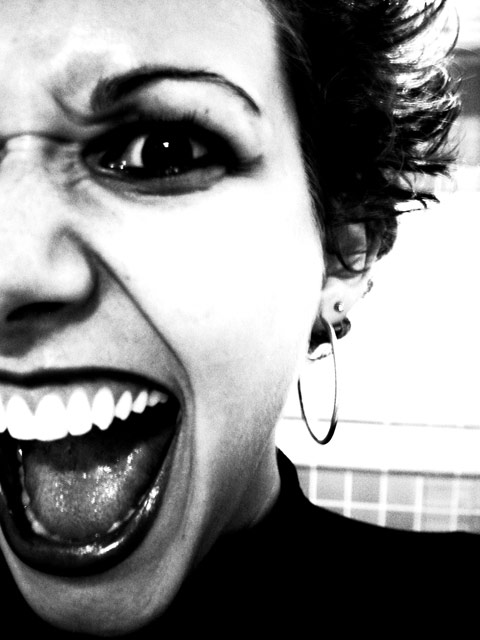
As you scream for your favorite sports team, special brain cells kick in to protect your auditory system from the sound of your own voice, a new study suggests.
These cells dampen your auditory neurons' ability to detect incoming sounds. The moment you shut up, the inhibition signal stops and your hearing returns to normal, so you can then be deafened by the screams of the guy next to you.
Scientists call this signal a corollary discharge. In crickets, on which the study was done, it's sent from the motor neurons responsible for generating loud mating calls to sensory neurons involved in hearing. The signal is sent via middlemen called interneurons.
Biologists have long known that corollary discharge interneurons, or CDIs, must exist. Only in recent years, however, have they started finding them. The new cricket study is the first to pinpoint CDIs for the auditory system.
Listen to me
Animals generate sounds to communicate, to attract mates, and to ward off rivals. Some animals, like dolphins and bats, even hunt with sounds.
CDIs help resolve two problems that sound-generating animals have. They protect creatures from their own sounds, and they allow animals to distinguish between sounds that they've created and ones from outside sources.
Sign up for the Live Science daily newsletter now
Get the world’s most fascinating discoveries delivered straight to your inbox.
"It's difficult to say whether crickets can distinguish between self-generated and external sounds, but a similar mechanism in humans might explain how we can recognize our own voice," study leader James Poulet from the University of Cambridge told LiveScience..
Scientists haven't yet identified CDIs in humans but imaging studies have shown that auditory areas in our brains are suppressed during speech.
More to it
In addition to CDIs, humans have a so-called "middle ear reflex" that also helps to protect our hearing from loud sounds. Two tiny muscles are attached to bones in the middle part of our ears. When we're exposed to sudden loud noises, these muscles contract and make our auditory systems less responsive to incoming sounds.
Unlike corollary discharges, the middle ear reflex dampens hearing only in response to external sounds. Also, because it is only a reflex, the response becomes less vigorous with repetition and long exposure.
CDIs are not unique to the auditory system. In monkeys, visual CDIs help keep the visual scene stable even as the eyes move around rapidly. Scientists suspect CDIs exist for other sensory systems as well, including touch.
This could help explain why we can't tickle ourselves.
"The corollary discharge is not present when someone else tickles us," Poulet explained. "Therefore the sensory response in the brain is much greater and the tickle appears much more ticklish."
Another recent study found that the brain can anticipate your effort to tickle yourself, and it discounts the sensation.










